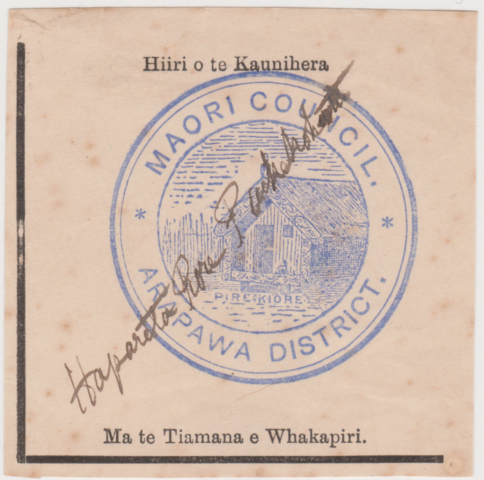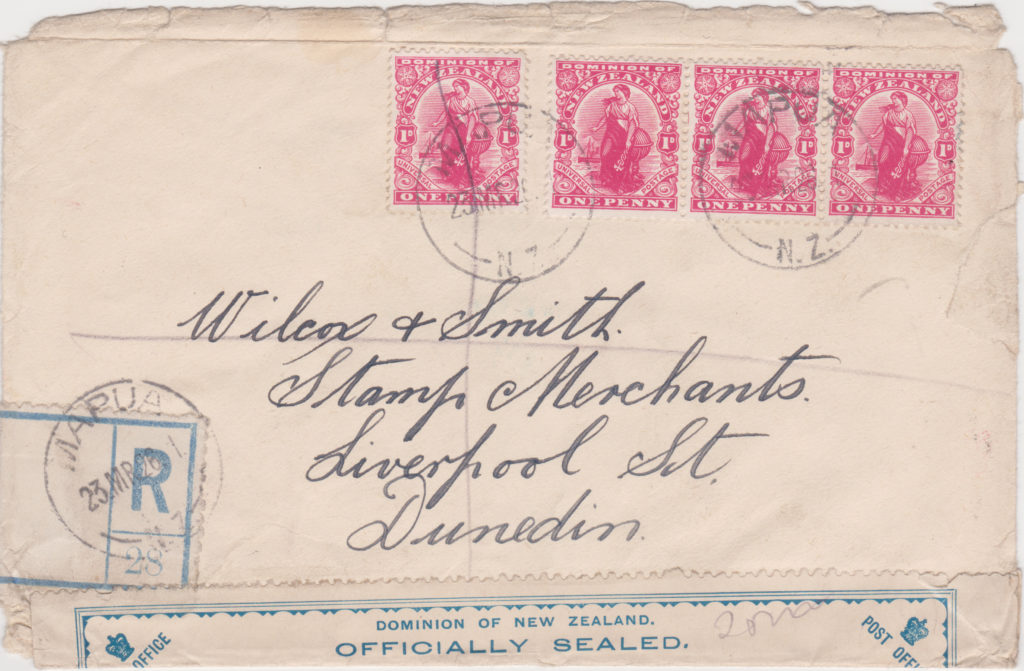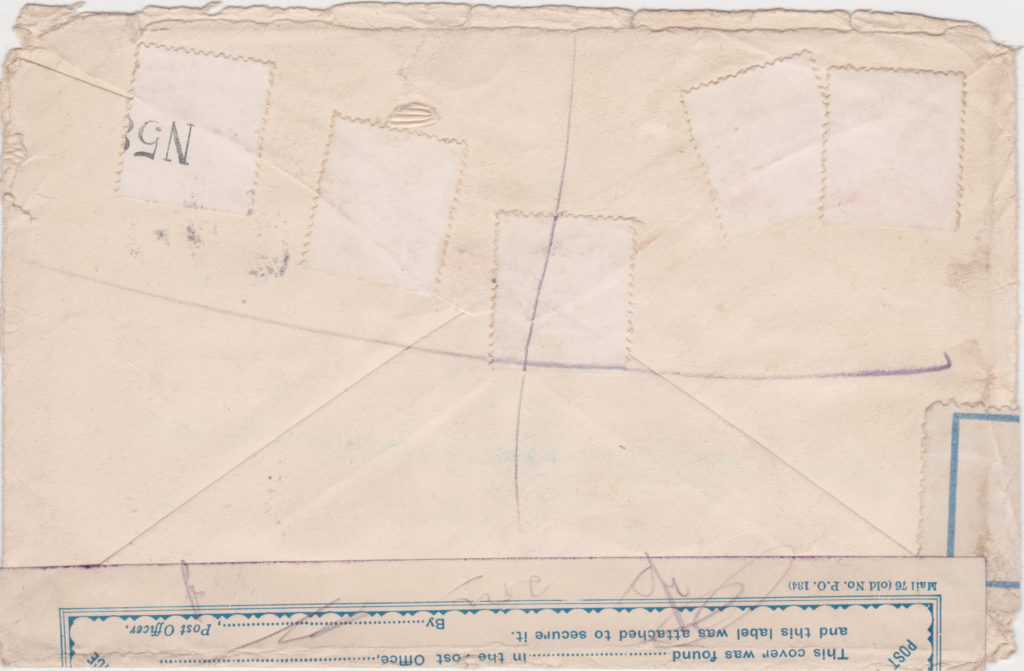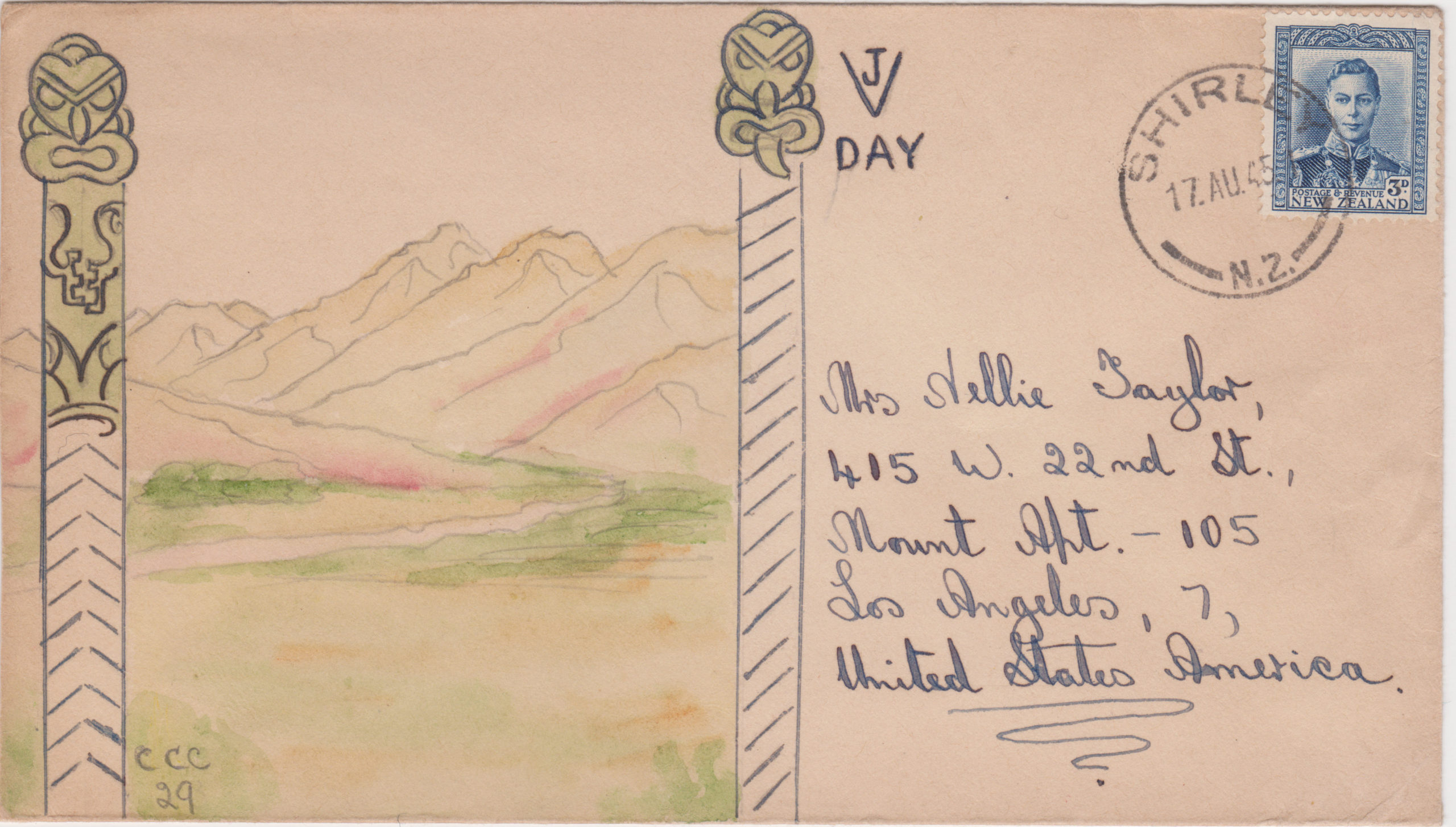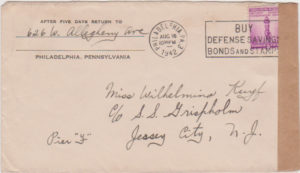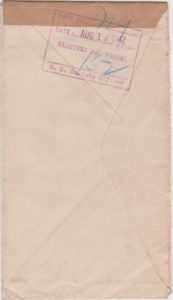Home
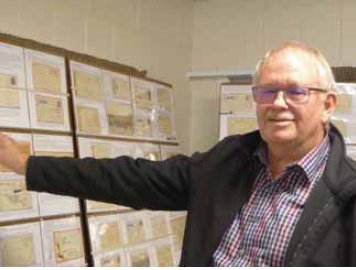
Welcome to the Home Page of Lindsay Chitty Philatelist! I am a Kiwi living in New Zealand. I have collected stamps most of my life, but only relatively recently become a serious collector. My Grandfather was a stamp collector and most of the material he had came through his lawyer’s office, Auckland, on mail from around the world. I still have one or two of these covers. I collected as a schoolboy – anything that came my way. If I know what I know now, I would have kept everything including the covers, parcel labels, etc. instead of carefully soaking the stamps off.
I was a member of the New Plymouth Boys’ High School Stamp Club, and enjoyed looking at all the beautiful material that was for sale in circuit books. I could have bought good NZ Full Face Queens for 2/-, but that was a week’s pocket money in those days!
During my years at University, stamp collecting was put on the back burner. Once qualified as a veterinarian in 1971, and having a reasonable income, meant I could buy bits and pieces. I subscribed to Campbell Paterson’s “new variety service”, and kept most that I was offered. It however meant that I had a bit of everything and nothing in particular.
I would go to the Stamp Exhibitions, and I learnt a lot from the Zeapex 1980 International Stamp Exhibition in Auckland. I still have the great souvenirs that were produced for that exhibition.
Having “nothing in particular” my first exhibit was one on “Philatelic Terms” at Tarapex 2008 in New Plymouth, with a Large Silver Award and 73 points. This started off as a “Traditional” exhibit, and ended up as a “Thematic” exhibit, including along the way, the name that the Judges couldn’t pronounce “The Alphabetilately of New Zealand Stamps and Postal History” . It got Vermeil at Timpex 2009, Large Vermeil Palmpex 2010,and Large Vermeil at the CPS 100 Exhibition in 2012, one point off a Gold.
There are a number of collectors who have given a great deal of help over the years in getting my exhibiting to where it is today. These include Jenny and Norman Banfield, Dr Ross Marshall, and Barry Scott. I am very grateful for the help that I have had from these people.
I am now an experienced exhibitor with several different exhibits, including several Large Gold and Gold awards.
Items of Interest
- Maori Council Frank, Arapawa District
I recently purchased a collection of stamps, postcards and this Maori Council Frank from a British Auction House.
The Maori Councils were originally set up in 1902 by the Government to control the “Health, Welfare and Moral well-being of Maori”. They operated at regional level, laying down rules of social control through bylaws which were valid in their own areas. They were partly funded by a “dog tax” imposed by the Government which was not universally acceptable. There were eventually 25 Maori Councils.
The Chairmen of the Maori Councils had “Free Frank” privileges, and could post letters and postcards without charge on official Maori Council business. The Maori Council Frank for their area was applied and signed by the Chairman. This is signed by Haparota Pore Pukekohatu.
Most surviving Maori Council Franks are cut-outs from covers and postcards.
Interestingly this item was featured in “The New Zealand Bulletin”, Campbell Paterson’s Newsletter, Volume XXIII, Number 12, July 1986. They state that “these franks, although actually of 20th century origin, must be among the scarcest of all N. Z. postal markings. No doubt because of their scarcity, reference information is very sketchy indeed”.
See Maoritanga, Frame 3, pages 3, 4 and 5 for other examples, and Council franks on cover and a postcard.
- Type 6 Officially Sealed Label on Cover
First Recorded Type 6 Officially Sealed Label on Cover
This cover was recently purchased on the internet. It is the first that I have seen on a cover, although there is the possibility of another reported by Andrew Dove. The cover is registered from Mapua (Tasman Bay) to Dunedin. Postage and registration is paid with 4 x 1d Dominion stamps cancelled with 2 x “MAPUA 23 MR 26” G-class datestamps and one for the registration label. Label applied to bottom of cover, endorsed “torn” and initialed by two officers. The flap of the cover is also sealed with five selvedge pieces from a stamp sheet, one with part sheet number N58… The Type 6 Officially Sealed label has Mail 76 (old No. P.O. 134) outside the frame of the label, bottom left. The four other recorded Type 6 labels are undated. The challenge is to find more of these Type 6 labels on cover. While it is conjectured that these followed the type 5 labels, they are likely to be dated 1924. Because Mapua is a small Post Office, old supplies of labels were probably used. Reference: “Post Office “Found Open – Officially Sealed Labels Part 3: 1903 – 1920 Types 4, 5 and 6 Labels” Alan Craig, Lindsay Chitty; The New Zealand Stamp Collector Vol. 97 Number 4, Dec. 2017. - VJ Day Illustrated Cover, 1945This hand-drawn cover was recently purchased on e-Bay. It is sent by S. P. Hamilton, 1717 Petre St., Christchurch, New Zealand to the United States of America. It has a Shirley 17 AU 45 G-class datestamp. The cover has a manuscript CCC29 on the front. News of the Japanese surrender arrived in New Zealand at 11 a.m. on Wednesday 15 August, to widespread celebrations of this welcome news. I have not seen illustrated covers of this sort before. Can anyone throw some light on the person who has done this?
- Cover to meet “Gripsholm”
When the USA entered WWII after the bombing of Pearl Harbour, WWII, there was a need to repatriate diplomats, civilians caught in the Far East at the wrong time, and sick and wounded prisoners of war. The USA sent a message 8th December 1941 to the US Charge d’Affaires in Berne, Switzerland to start negotiations through their Tokyo Embassy. The result of this was that the M. V. Gripsholm (a vessel from neutral Sweden) was chartered by the USA for transfers of prisoners, mail and supplies. It was agreed that the first exchange would be at the neutral port of Lorenço Marques, Portuguese Mozambique.
The Japanese had two exchange vessels. The M. V. Asama Maru left Yokohama with 416 repatriates, picking others up at Hong Kong and Saigon. The Conte Verde left Shanghai with 640 repatriates and picked others up at Singapore.
This cover was purchased in a lot of three, on E-bay. With the COVID-19 lock-down and disruption of international postage, the item was sent March 18th from the USA, with a transit time of 9 weeks.
This cover is addressed to Wilhelmina Kuyf who was a passenger with the first Diplomatic Exchange voyage leaving Lourenco Marques July 28th 1942 arriving New York August 25 1942. The passenger manifest lists her as United States Citizen. Her passport was issued Tientsin, China March 21 1941, recorded as a female aged 41.
Her address was recorded as 626 W. Allegheny Ave Philadelphia, Pennsylvania, USA, the return address given on the cover.
The cover has a 3c USA adhesive with “PHILADELPHIA PA AUG 16 1942” slogan cancellation; Cover opened by Customs and resealed with brown tape; Purple boxed cachet “PORT of “NY” AUG 19 1942 Examined and passed “152” U.S. Customs Officer”.
- The Moa and The Lion
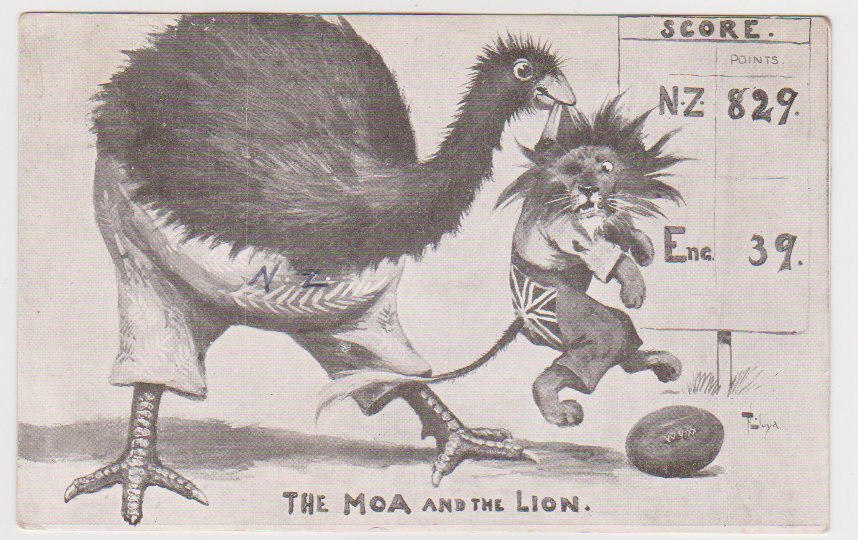 This Postcard was in a collection of cigarette Cards that I recently purchased. It took a lot of work to separate it from the album page that it was well and truly stuck down to!
Artist Trevor Lloyd (1863 – 1937) was a pioneer of etching in New Zealand and one of the leading political cartoonists for 32 years. During the 1905 All Black tour of Britain, he drew one of the first cartoons using the Kiwi as a symbol for New Zealand.
This Postcard was in a collection of cigarette Cards that I recently purchased. It took a lot of work to separate it from the album page that it was well and truly stuck down to!
Artist Trevor Lloyd (1863 – 1937) was a pioneer of etching in New Zealand and one of the leading political cartoonists for 32 years. During the 1905 All Black tour of Britain, he drew one of the first cartoons using the Kiwi as a symbol for New Zealand.
